Ion release from hydroxyapatite and substituted hydroxyapatites in different immersion liquids: in vitro experiments and theoretical modelling study
- PMID: 33614097
- PMCID: PMC7890514
- DOI: 10.1098/rsos.201785
Ion release from hydroxyapatite and substituted hydroxyapatites in different immersion liquids: in vitro experiments and theoretical modelling study
Abstract
Multi-substituted hydroxyapatites (ms-HAPs) are currently gaining more consideration owing to their multifunctional properties and biomimetic structure, owning thus an enhanced biological potential in orthopaedic and dental applications. In this study, nano-hydroxyapatite (HAP) substituted with multiple cations (Sr2+, Mg2+ and Zn2+) for Ca2+ and anion ( ) for and OH-, specifically HAPc-5%Sr and HAPc-10%Sr (where HAPc is HAP-1.5%Mg-0.2%Zn-0.2%Si), both lyophilized non-calcined and lyophilized calcined, were evaluated for their in vitro ions release. These nanomaterials were characterized by scanning electron microscopy, field emission-scanning electron microscopy and energy-dispersive X-ray, as well as by atomic force microscope images and by surface specific areas and porosity. Further, the release of cations and of phosphate anions were assessed from nano-HAP and ms-HAPs, both in water and in simulated body fluid, in static and simulated dynamic conditions, using inductively coupled plasma optical emission spectrometry. The release profiles were analysed and the influence of experimental conditions was determined for each of the six nanomaterials and for various periods of time. The pH of the samples soaked in the immersion liquids was also measured. The ion release mechanism was theoretically investigated using the Korsmeyer-Peppas model. The results indicated a mechanism principally based on diffusion and dissolution, with possible contribution of ion exchange. The surface of ms-HAP nanoparticles is more susceptible to dissolution into immersion liquids owing to the lattice strain provoked by simultaneous multi-substitution in HAP structure. According to the findings, it is rational to suggest that both materials HAPc-5%Sr and HAPc-10%Sr are bioactive and can be potential candidates in bone tissue regeneration.
Keywords: Ca; Korsmeyer–Peppas model; Mg and P release; Sr; multi-substituted hydroxyapatites; release mechanism.
© 2021 The Authors.
Conflict of interest statement
we declare we have no competing interests.
Figures
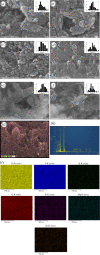
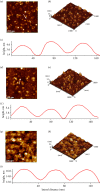

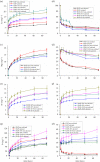
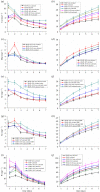

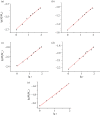
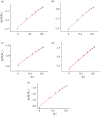
Similar articles
-
Advanced Mg, Zn, Sr, Si Multi-Substituted Hydroxyapatites for Bone Regeneration.Int J Nanomedicine. 2020 Feb 13;15:1037-1058. doi: 10.2147/IJN.S226630. eCollection 2020. Int J Nanomedicine. 2020. PMID: 32103955 Free PMC article.
-
Biomimetic ion substituted and Co-substituted hydroxyapatite nanoparticle synthesis using Serratia Marcescens.Sci Rep. 2023 Mar 18;13(1):4513. doi: 10.1038/s41598-023-30996-z. Sci Rep. 2023. PMID: 36934131 Free PMC article.
-
The deposition of strontium and zinc Co-substituted hydroxyapatite coatings.J Mater Sci Mater Med. 2017 Mar;28(3):51. doi: 10.1007/s10856-017-5846-2. Epub 2017 Feb 14. J Mater Sci Mater Med. 2017. PMID: 28197823
-
Remineralization Induced by Biomimetic Hydroxyapatite Toothpastes on Human Enamel.Biomimetics (Basel). 2023 Sep 23;8(6):450. doi: 10.3390/biomimetics8060450. Biomimetics (Basel). 2023. PMID: 37887581 Free PMC article.
-
Post-substitution of magnesium at CaI of nano-hydroxyapatite surface for highly efficient and selective removal of radioactive 90Sr from groundwater.Chemosphere. 2022 May;295:133874. doi: 10.1016/j.chemosphere.2022.133874. Epub 2022 Feb 4. Chemosphere. 2022. PMID: 35131267
Cited by
-
Coupled effect of particle size of the source materials and calcination temperature on the direct synthesis of hydroxyapatite.R Soc Open Sci. 2021 Sep 8;8(9):210684. doi: 10.1098/rsos.210684. eCollection 2021 Sep. R Soc Open Sci. 2021. PMID: 34527274 Free PMC article.
-
Investigation of Calcium Phosphate-Based Biopolymer Composite Scaffolds for Bone Tissue Engineering.Int J Mol Sci. 2024 Dec 22;25(24):13716. doi: 10.3390/ijms252413716. Int J Mol Sci. 2024. PMID: 39769477 Free PMC article.
-
Development of Biomaterials Based on Biomimetic Trace Elements Co-Doped Hydroxyapatite: Physical, In Vitro Osteoblast-like Cell Growth and In Vivo Cytotoxicity in Zebrafish Studies.Nanomaterials (Basel). 2023 Jan 6;13(2):255. doi: 10.3390/nano13020255. Nanomaterials (Basel). 2023. PMID: 36678008 Free PMC article.
-
Biomimetic Action of Zinc Hydroxyapatite on Remineralization of Enamel and Dentin: A Review.Biomimetics (Basel). 2023 Feb 8;8(1):71. doi: 10.3390/biomimetics8010071. Biomimetics (Basel). 2023. PMID: 36810402 Free PMC article. Review.
-
Enhanced Release of Calcium Ions from Hydroxyapatite Nanoparticles with an Increase in Their Specific Surface Area.Materials (Basel). 2023 Sep 25;16(19):6397. doi: 10.3390/ma16196397. Materials (Basel). 2023. PMID: 37834536 Free PMC article.
References
-
- Oonishi H Jr, Oonishi H, Ohashi H, Kawahara I, Hanaoka Y, Iwata R, Hench LL. 2014. Chapter 2. In Advances in calcium phosphate biomaterials, vol. 2 (ed. Ben-Nissan B), pp. 19–49. Berlin, Germany: Springer.
Associated data
LinkOut - more resources
Full Text Sources
Other Literature Sources
Research Materials
Miscellaneous

